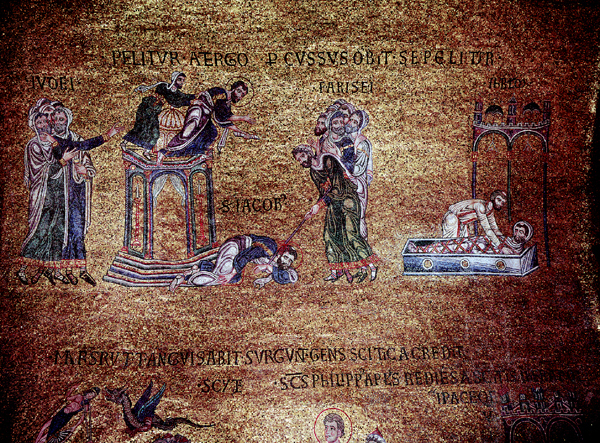Image Details

Photo by Ritter/Dumbarton Oaks, Washington, DC
As his enemies watch, James is thrown from the pinnacle of the Jerusalem Temple (below). He lives, but not for long. At the foot of the Temple, Jesus’ eldest brother is beaten and stoned, and then laid out in his casket. This 13th-century mosaic from the Cathedral of San Marco, in Venice, illustrates the martyrdom of James as recorded by the historian Hegesippus in the second century C.E. According to Hegesippus, the scribes and Pharisees killed James for fear that he would lead the people astray. (Hegesippus does tend to exaggerate, however, claiming, for example, that James prayed so much that his knees became as hard as a camel’s.) James’s martyrdom is confirmed—only in part and in less detail—by the first-century C.E. Jewish historian Josephus, who wrote that James was stoned to death because he had “transgressed the law.”
Despite their differences, both accounts reflect the power James held within the early Christian community: Labeled a pillar of the Church by Paul (Galatians 2:9), James appears throughout the Book of Acts as the leader of the Jerusalem Church following Jesus’ death.
